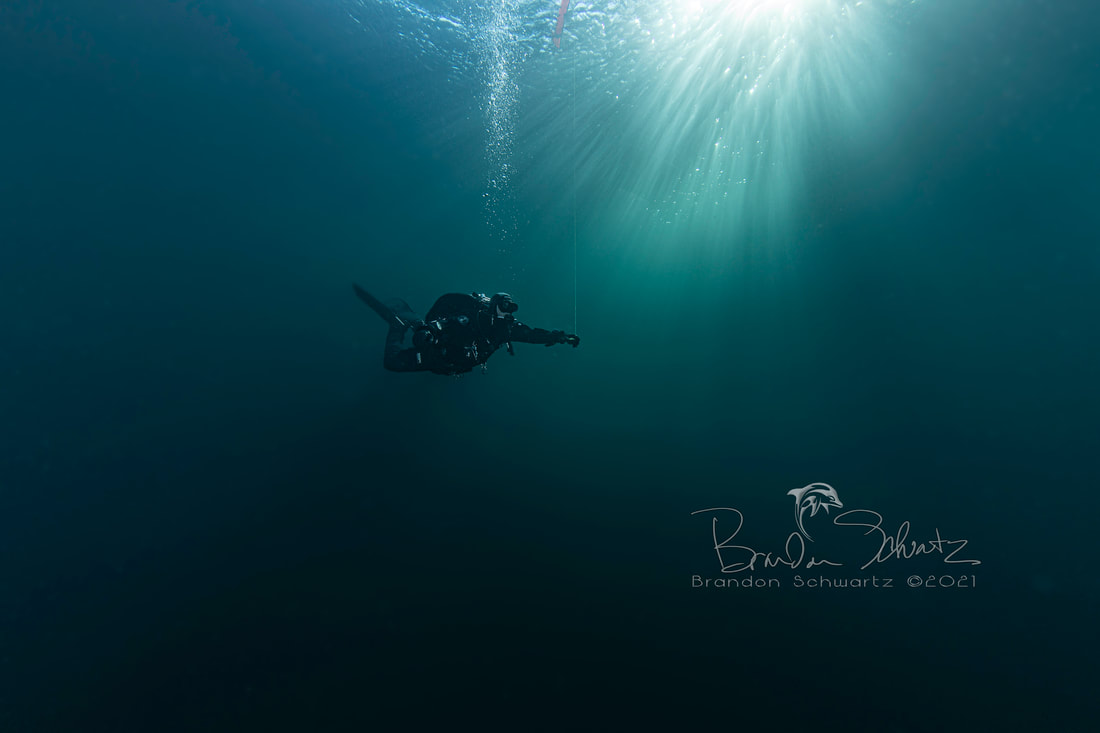|
1/3/2022 0 Comments Resting TrimWhat is that one thing you see in other divers that you desire? Is it their fancy, new, feature-packed, full-color dive computer? The limited-edition, titanium-coated, ruby-encrusted regulator? Maybe their 6-pack abs while donning their wetsuit?
I guess I can understand the fit abs;) Of all the tips, tricks, and skills that I teach, the one that most divers ask me to help them with is the quiet calm of “Resting Trim.” This skill, when fully internalized will give you the calculated control in the water that so many divers long for. I am delighted when I see divers moving underwater with grace and fluidity. This can only be done with proper buoyancy control and the ability to remain infinitely still in the water column. This characteristic has become a focus of my training, a core value that I help guide my students to learn and help them to master. Buoyancy control is nothing new to scuba diving. We have been wearing BCD’s underwater for half a century now. It has been a part of scuba education and a required basic skill for certification for decades. So why then is it still something so rare to see? Please, let me take a moment to clarify. Buoyancy is not pivoting on your fin tips. It is not floating in the buddha position, or swimming around for 20 minutes without crashing into the bottom. It is not something you get by letting air in and out of your BCD. Buoyancy control is a never-ending quest for the mastery of breathing, balance and trim. From the very beginning of the dive all the way until the last breath has been taken underwater. Never for one second or one breath do we ever let ourselves regress back to losing that control. It takes strong determination and will to achieve this level of perfection and ultimately peace while diving. It is a flower that needs to be tended to and cared for on every dive. It starts with a lot of work but ends in complete rest. This is the secret of buoyancy control. It is about your resting trim. Any diver in the matter of a few hours of instruction can learn to put gas into their bcd and let gas out in order to prevent violent destruction to themselves and the environment, but that is only the very beginning. True buoyancy control requires a balance of your equipment so that it works in your favor to maintain your horizontal trim. Trim that is controlled with awareness, breathing, and body mechanics rather than perpetual swimming. This is the next wave of change that divers need to take control of. Resting trim is your ability to maintain neutral buoyancy, holding horizontal positioning, eliminating extraneous movement, staying in one place without touching any part of the environment other than the water you are immersed in. Resting trim is beautiful to see and you will not forget what it looks like when you see a diver that has mastered it. It is graceful and artful. And if you struggle with it, it will make you hunger for it. Resting trim is how you approach a delicate subject and take a picture of it without selfishly interfering with the environment for your own personal gain. It is how you and a dive buddy effortlessly communicate with clear and understandable messaging, free from confusion. It is how you make a free ascent without the need to hold tightly onto a line, how you can problem solve on that ascent in mid-water, how you clear a mask on the edge of a wall without losing your control of depth. Resting trim is how you stay calm, collected, and confident in all of your diving without worrying about “what if.” Because mastering your resting trim puts you in a place of control and awareness that will ready you for engaging in an unexpected situation. It is the position you will need to know intimately and trust when you need to act on any situation. So again, what is it that you see in divers that you want? What skill do you lack that you desperately want to add to your diving ability? As I’m sure you’re beginning to understand from most of these emails, it is rarely a product you can buy and add-on. Instead, good diving takes time, practice, and patience. Your resting trim is what will identify you as a confident diver. Thanks for taking the time to read this, let me know if you have any further questions, comments, or concerns. Thanks to my dive buddy, podcasting partner, and photo guru, Brando, for the top photo of my resting trim on a recent ascent at Gilboa Quarry.
0 Comments
Leave a Reply. |
James Mott
James has been a PADI instructor since 1998 and was one of the original 10 instructors for UTD Scuba Diving in 2009. Archives
June 2024
Categories |
Site powered by Weebly. Managed by JustHost

 RSS Feed
RSS Feed